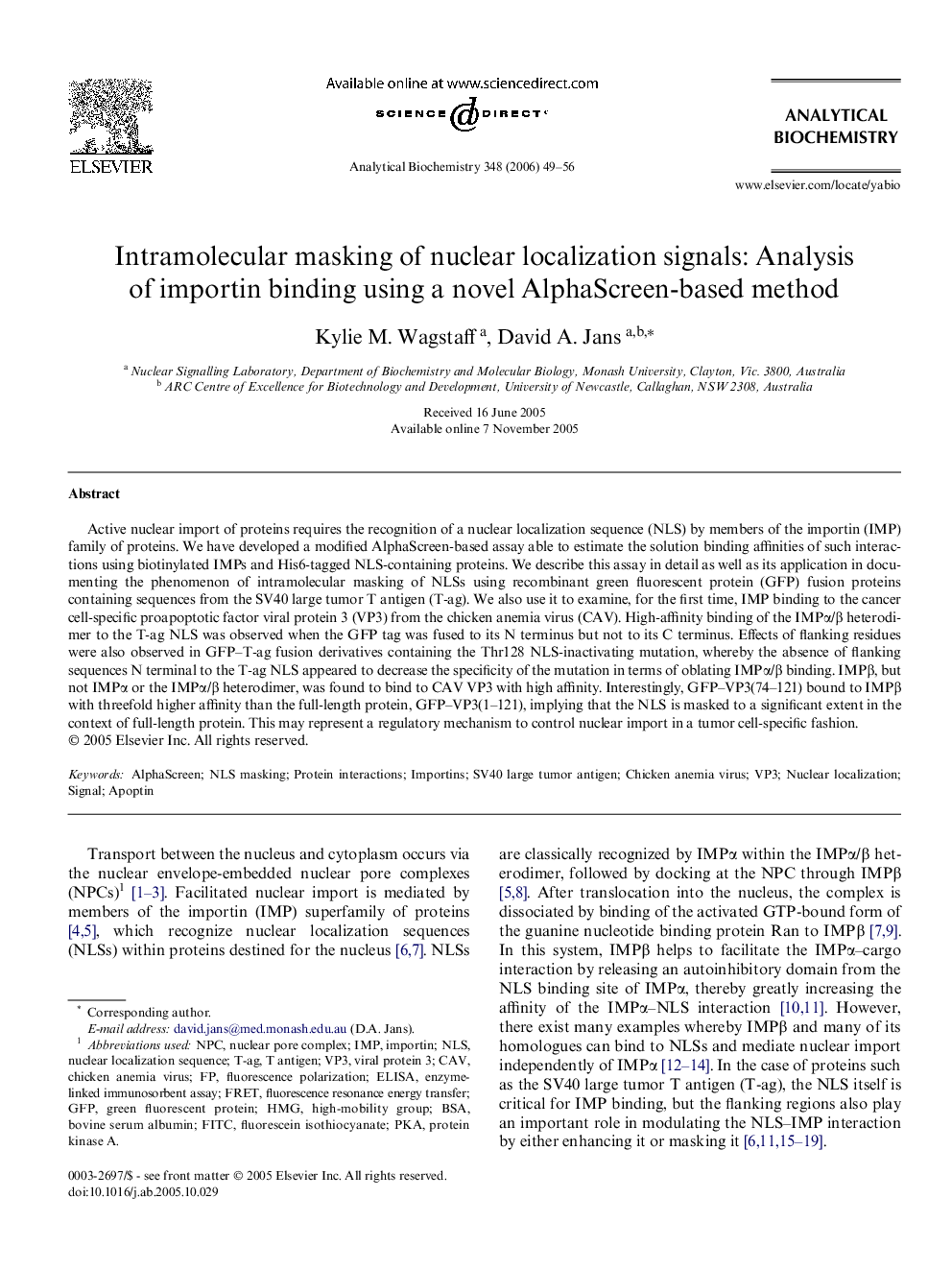| Article ID | Journal | Published Year | Pages | File Type |
|---|---|---|---|---|
| 1176776 | Analytical Biochemistry | 2006 | 8 Pages |
Active nuclear import of proteins requires the recognition of a nuclear localization sequence (NLS) by members of the importin (IMP) family of proteins. We have developed a modified AlphaScreen-based assay able to estimate the solution binding affinities of such interactions using biotinylated IMPs and His6-tagged NLS-containing proteins. We describe this assay in detail as well as its application in documenting the phenomenon of intramolecular masking of NLSs using recombinant green fluorescent protein (GFP) fusion proteins containing sequences from the SV40 large tumor T antigen (T-ag). We also use it to examine, for the first time, IMP binding to the cancer cell-specific proapoptotic factor viral protein 3 (VP3) from the chicken anemia virus (CAV). High-affinity binding of the IMPα/β heterodimer to the T-ag NLS was observed when the GFP tag was fused to its N terminus but not to its C terminus. Effects of flanking residues were also observed in GFP–T-ag fusion derivatives containing the Thr128 NLS-inactivating mutation, whereby the absence of flanking sequences N terminal to the T-ag NLS appeared to decrease the specificity of the mutation in terms of oblating IMPα/β binding. IMPβ, but not IMPα or the IMPα/β heterodimer, was found to bind to CAV VP3 with high affinity. Interestingly, GFP–VP3(74–121) bound to IMPβ with threefold higher affinity than the full-length protein, GFP–VP3(1–121), implying that the NLS is masked to a significant extent in the context of full-length protein. This may represent a regulatory mechanism to control nuclear import in a tumor cell-specific fashion.
